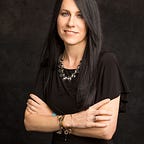3 Ways to Unleash the Most Creative Students Ever (Part 2)
Guest post by Chris Chappotin
Assistant Superintendent of Curriculum and Instruction
Design Solutions to Real Problems
Design solutions to real problems to develop the most creative students ever. There are enough unmet needs in our schools, communities, country, and world for our students to make a positive difference. The content you are teaching can become a connection point between neighbors’ problems and the creative solutions of our students.
Therefore, how can we mine real problems to craft opportunities to create solutions for students? First, pay attention to conversations around campus. Has a colleague uncovered a situation where a positive difference is needed? Is there a renovation need in the school building? Could we come together to beautify the playground or start a community garden? There are a myriad of ways to apply content throughout the school building and campus if we collaboratively look through the lens of problems and solutions to release creativity in our students.
Second, pay attention to local businesses and service-organizations that may be at work improving life in the community. When my son was in 4th grade, he and a few friends galvanized their teacher, classmates, and classmates’ parents to partner with a local service organization for “Neighborhood Fun Day: Kids Helping Kids Through the Power of Friendship.” The students creatively applied the state standards they were learning to plan, promote, and pull-off an amazing event at a local park that included face painting, games, a lemonade stand, food, and friends. My son and his school friends were presented with a problem. There were kids in their city who did not have the same opportunities they did, and “Neighborhood Fun Day” was how they chose to make an impact. I am thankful for his teacher’s willingness to engage students in problem-solving and empower them down whatever pathway their creativity would take them. Now, my son is two 6-weeks into his 8th grade school year, and he still talks about the positive difference he and his friends made 4 years ago.
Third, pay attention to culture, technology, politics, and other pertinent current events. When presented with an appropriate problem in any of the aforementioned areas, what possible solutions will students dream up? Will they start a podcast, YouTube channel, or blog? Will they design a video game, robot, or website? Will they write a comic book, start a business, or launch an app? Who knows? However, teaching them how to curate the world around them with appropriate analyzation, strategy, and problem-solving while also taking actionable steps to make a positive impact will be deeper learning and skill-development they will remember forever. Plus, they may not need to remember anything, because the creativity that results from the problems you present may not just result in an assignment for school; but instead, an ongoing alteration to their life right now. With problems to be solved all around, let us be quick to invite our students into solution design to develop their creativity and make our world a better place.
Coach and Resource
Coach and resource when needed to develop the most creative students ever. For the educator, this is a journey of relinquishing control. Basically, if you want to control your classroom, give control away to your students. When you design a learner experience that relies on their application of content through intrigue and the solving of real problems, students will begin to drive and even demand learning. Now, you have captive creators ready for more of what you can give: coaching and resourcing.
First, in the design phase of the learner experience, anticipate the resources that will be needed. You can accomplish this through student data analysis, asking other educators for feedback on lesson design, and, depending on what you are attempting to accomplish, utilizing resources that are already available. Furthermore, as the learning experience launches, opportunities will arise for the teacher and students to create and curate resources along the way.
Second, strategically support students through pre-planned and impromptu teacher-led and student-led workshops throughout the learning experience. Through formative assessments, academic conversations, and student feedback, you will know exactly what your students need, and if you don’t, keep asking them. Workshops can be based on standards, applications, idea-generation, critique, or just about anything. Fluidly moving in and out of these purposeful small groups will empower students to take necessary next-steps in their creativity.
Third, teach students how to resource themselves to solve micro-problems on their way to solving macro-problems. In prior times, we might have referred to this as research; however, today this has evolved into team-building, researching, and collaborating. Each of these skills are needed in today’s workplaces and schools. As a result, let’s nurture their development within our learner experiences. That way, students can grow to be confident and competent in their own creativity, because a lack in these skill areas is not holding them back. In other words, if we can teach students how to access the resources already available to them and create anything additional that they need, in the end, they will be ready to face any challenge that comes their way throughout the learning experience.
Students are wired for creativity. As educators, we must design opportunities for them to practice. By mining through the facilitation of intrigue, collaborative design of solutions to real problems, and coaching and resourcing along the way, we can craft learner experiences that consistently unleash the creativity in our students. As a result, they will run to our classes, make a meaningful difference, and have loads of fun along the way.
Originally published at http://rdene915.com on December 4, 2020.
